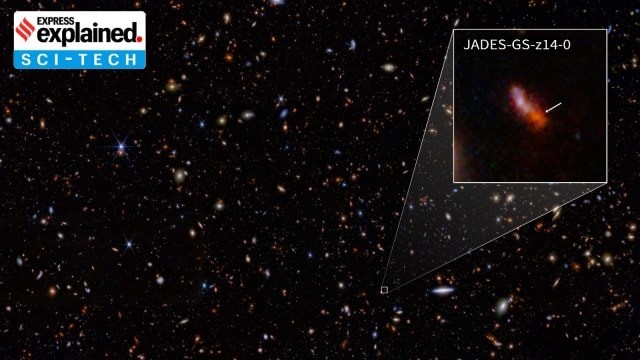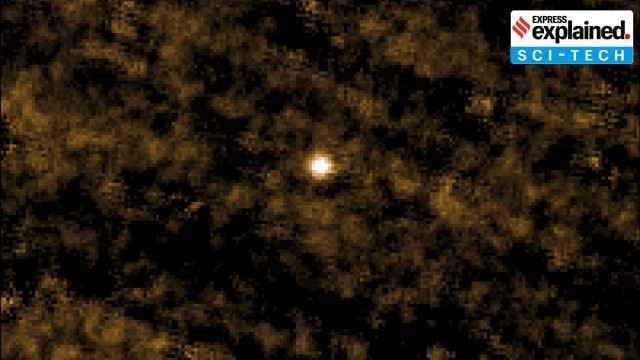Description

Source:
IndianExpress
Disclaimer: Copyright infringement not intended.
Context
- NASA's James Webb Space Telescope (JWST) has discovered the earliest-known galaxy, JADES-GS-z14-0.
- This galaxy, observed by the JWST Advanced Deep Extragalactic Survey (JADES) program, formed approximately 290 million years after the Big Bang.
- The JADES team also identified another early galaxy, JADES-GS-z14-1, which formed about 303 million years after the Big Bang, with a mass of 100 million solar masses and forming about two new stars per year.
Details
- Size:Measures about 1,700 light-years across.
- Time:Approximately 290 million years post-Big Bang, which translates to the galaxy existing when the universe was just 2% of its current age.
- Mass:Equivalent to 500 million solar masses.
- Star Formation Rate:Rapidly forming new stars, about 20 per year.
Significance of the Discovery
- Earliest-Known Galaxy:Previously, the earliest-known galaxy was dated to about 320 million years post-Big Bang.
- Brightness and Size:The galaxy is surprisingly bright and large, challenging current understanding of galaxy formation in the early universe.
Hypotheses on Brightness
- Three main hypotheses have been proposed to explain the luminosity of early galaxies:
- Supermassive Black Holes: Initially thought that supermassive black holes consuming material might cause the brightness. This hypothesis has been ruled out as the light is spread over a wider area than expected from black hole activity.
- Star Population Density: The galaxies could be more densely populated with stars than previously thought.
- Star Brightness: The stars in these early galaxies might be intrinsically brighter than stars found in the current universe.
Must read article: James_Web_Telescope
Sources: IndianExpress
|
PRACTICE QUESTION
Q. Consider the following statements regarding JADES-GS-z14-0:
- This galaxy has been observed by the JWST Advanced Deep Extragalactic Survey (JADES) program.
- It measures 1.7 light years across.
- The galaxy was formed during the Big Bang phenomenon.
Which of the statements given above is/are correct?
Options:
A. 1 only
B. 1 and 2 only
C. 2 and 3 only
D. 1, 2, and 3
Answer: A
|











